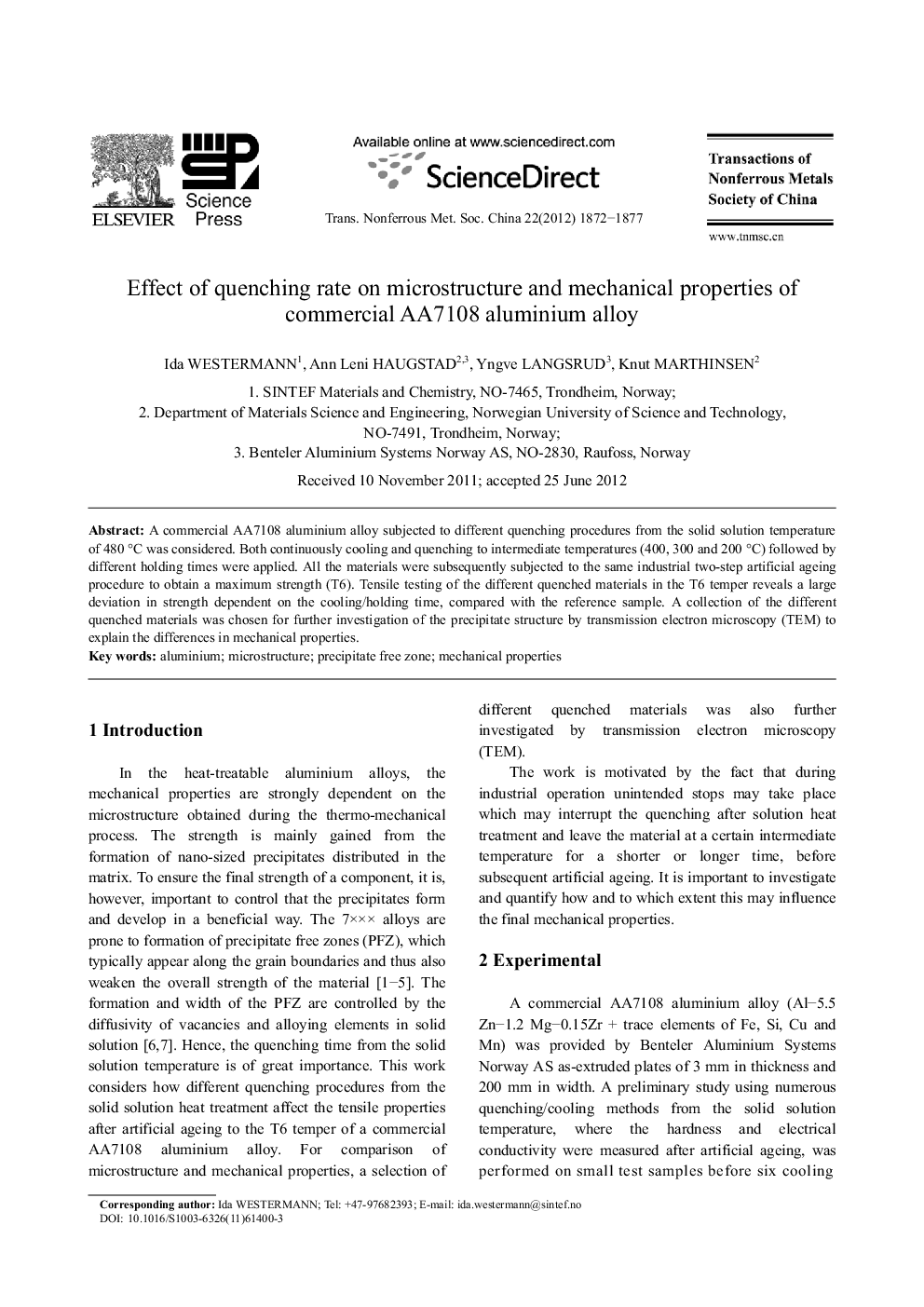| Article ID | Journal | Published Year | Pages | File Type |
|---|---|---|---|---|
| 1637695 | Transactions of Nonferrous Metals Society of China | 2012 | 6 Pages |
A commercial AA7108 aluminium alloy subjected to different quenching procedures from the solid solution temperature of 480 °C was considered. Both continuously cooling and quenching to intermediate temperatures (400, 300 and 200 °C) followed by different holding times were applied. All the materials were subsequently subjected to the same industrial two-step artificial ageing procedure to obtain a maximum strength (T6). Tensile testing of the different quenched materials in the T6 temper reveals a large deviation in strength dependent on the cooling/holding time, compared with the reference sample. A collection of the different quenched materials was chosen for further investigation of the precipitate structure by transmission electron microscopy (TEM) to explain the differences in mechanical properties.
